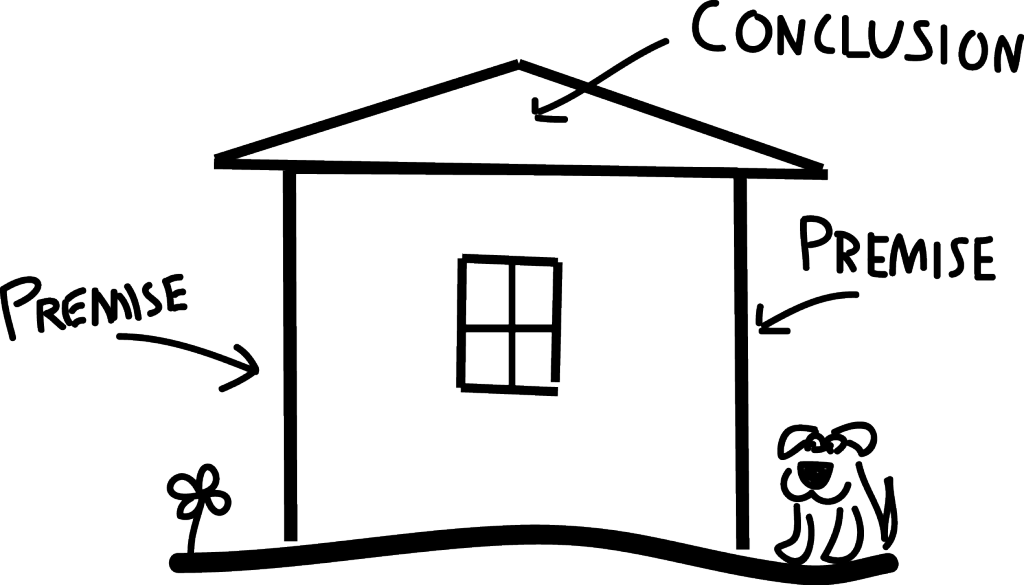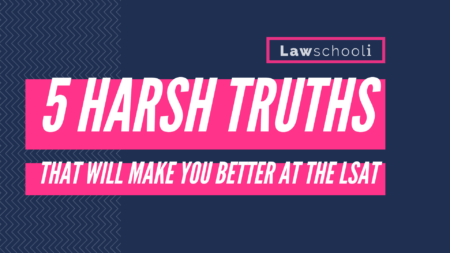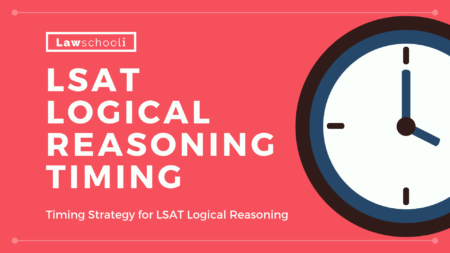
Mastering LSAT logical reasoning main point questions is, along with learning ‘must be true questions,’ the first thing you should do to attack the LR section.
I want you to think of main point questions in two ways:
First, they are relatively easy points. Good LSAT takers should be able to answer them, on average, faster than many other question types.
Second, be aware that main point questions form the basis for your understanding of other question types, especially strengthen and weaken.
Focus on mastering them so you can approach other questions types effectively.
This lesson is excerpted from our Mastermind Study Group. If you want to join, here’s how it works. You self-study (cheap!), but we are there to guide you every step of the way with premium lessons and coaching. Access us through the private forum or during live office hours. Join us.
First, let’s learn how to spot a ‘main point’ question:
Example of LSAT ‘Main Point’ LSAT Question Prompts
“The main point of the argument is that…”
“Which one of the following most accurately expresses the main conclusion of the argument”
“Which one of the following most accurately restates the main conclusion of the argument”
LR Main Point Question Mastery
Main point questions are really just asking you to identify the conclusion. You will be given a short passage that will consist of premises and conclusions. The question answer, “the main point,” will be a restated version of the argument’s central conclusion. Main point = main conclusion.
Now I say the main conclusion because sometimes there are a couple of conclusions in a passage. When it comes to main points, however, it’s kind of like the Highlander: “There can be only one” (if you’ve never watched that movie, do so. It’s really good considering its production budget). All other premises and conclusions will work together to support that conclusion.
The method to master these questions is straightforward. You need to be able to
- identify the conclusion, and
- find an answer choice that restates the conlusion, or, failing that,
- eliminate answer choices that don’t correctly restate the conclusion.
The Misguidedly Basic Approach

A lot of LSAT prep resources will tell you to look for the conclusion based on certain ‘indicator words.’ The most common are “therefore…” and “for this reason.” Now it’s true that the word “therefore” is basically a glowing neon sign that points to a conclusion.
Therefore, it’s completely unsurprising that the question doesn’t always use such an indicator word. The LSAT doesn’t make a ton of questions that everyone can answer with some simple trick. Sometimes this trick will work, but just as often, it won’t help you or might even get you into trouble. While you should be aware of indicator words, don’t rely on them.
Also, don’t try to figure out the conclusion by where it comes in the paragraph — yes, in middle school, you were taught to puts conclusions at the end of paragraphs, but the LSAT, like most writing, puts them anywhere they want to — beginning, middle, or end.
The Right Way To Think About Conclusions
Thinking about main points the right way requires us to discuss arguments in general terms. Sorry, but learning the LSAT requires us to think abstractly every now and then. If the LSAT was all skills you already know and understand, then we wouldn’t be discussing how to do well on it.

In week one of my undergrad logic course, I was taught to think about arguments like a house. This turns out to be the perfect approach for understanding LSAT arguments. Premises support the conclusion, so premises are kind of like the walls of the house. Add some of them together, and they lend enough support to hold up the conclusion, which is like the roof. Let’s take a look at this, so it’s easy to picture:As usual, apologies for the terrible art/handwriting. IMO things are easier to remember if they look terrible, so whatever. The point is kind of obvious: premises support conclusions. They are the reasons given for the conclusion. Without premises, you’ve just got a roof that’s going to be lying on the ground with no support. You see this all the time in real life, like when a conservative makes an internet comment saying, “Obamacare is going to kill us all!” or when a liberal comments, “GMOs are silently murdering us!” but they don’t say why.
Luckily, on LSAT main point questions, we are always given supported conclusions. A ‘main point’ question passage will have some premises, one more conclusions, and possibly some extraneous elements. Sometimes there are statements that even work against the conclusion or undermine a premise. These are like the dog and the flower in the above picture. For the purposes of main point questions, you need to see past them to find the real conclusion.
Let’s look at an example argument:
There seems to be minimal hazard for consumers associated with consuming crops treated with next-generation pesticides, because these pesticides wash off before crops are processed for consumption. Despite that, immediate steps should be taken to determine the safety of these chemicals since consumers could ingest them. Farm workers may contact the plants shortly after they are treated and the chemicals can conceivably enter the water supply via seepage, contaminating groundwater.
Now let’s look at what is what in this argument, pulling it apart into pieces:
“There seems to be minimal hazard for consumers associated with consuming crops treated with next-generation pesticides” — This is what I referred to earlier as an “extraneous element.” It’s like the dog or the flower in the picture above. It kind of cuts against the main conclusion of the argument, which we will see shortly. However, it’s distracting because it does look like a conclusion of sorts itself. It has the support of one premise even (“pesticides wash off before crops are processed for consumption”), so how do we know it’s not the answer?
Well, in simple terms, this just isn’t the point the author is trying to advance. This mini-conclusion is like a weak house that the main argument bulldozes to make way for itself. It has only one premise, so its roof is already on the ground like this:

That’s not much of an argument. Now, that’s okay sometimes — Many conclusions you see on the LSAT, including those that form the main point, won’t always be well supported. However, when you see two houses being built as we have in this question, you have to figure out which is the big house, the main conclusion, then look at which one is poorly built and is getting bulldozed. Figure out which house the author is trying to build. The conclusion on that house is the main point.
“…because these pesticides wash off before crops are processed for consumption” –
This scant support offered for that little conclusion we talked about already, the single wall in the house-fail diagram above. It’s a premise, not a conclusion, so it could never be the correct answer. We’ll talk more about how to identify premises in the next section, on the “why-because test.”
Despite that, immediate measures should be taken to determine the safety of these chemicals — Now, that looks a lot like another conclusion, and in fact, that’s exactly what it is. Is it the main conclusion? You have to look at the rest of the argument to make sure.
…since consumers could ingest them. Farm workers may contact the plants shortly after they are treated — This is a reason offered in support of the previous sentence, idea that we should take measures to determine the safety of the herbicides. It’s one wall that is holding up that conclusion. Because it’s a premise, it could never be the answer.
… and the chemicals can conceivably enter the water supply via seepage, contaminating groundwater. — Another wall supporting that second conclusion we ran into. All signs are now pointing towards that one conclusion, and sure enough, that would be the author’s main point.
The answer will be something that restates this: immediate measures should be taken to determine the safety of these chemicals.
Now here, it’s pretty easy to see which elements are the support (premises) and which is the conclusion. It’s not always super easy, however, and at that point, it’s good to have a trick in your arsenal. Here’s how you determine when something is a premise and when it’s a conclusion.
The Why-Because Test
Now, occasionally your intuition is going to fail you. In fact, the LSAT will try to make it difficult to decide which pieces of the argument are conclusions and which pieces are premises (or which are just extra junk).
To solve the issue, use the why-because test. A premise supports a conclusion, so when you ask, “why X?” the premise will provide an answer when placed in the form “because of Y.”
So think of it as a little test strip where you can plug the elements in. It will look like this:
Why [CONCLUSION]? Because [PREMISE]
If the reasoning makes sense when you plug things in, you know that you’ve correctly identified the pieces. Let’s look at it with our example:
Why [Take immediate measures to determine the safety of these chemicals]? Because [consumers could ingest them]
This is perfectly sound reasoning. Therefore you know we’ve correctly identified which one is the conclusion (the why part) and which is the premise (the because part).
Look at it flipped around, and you’ll see that it doesn’t make sense:
Why [Could consumers ingest these pesticides]? Because [we should take immediate measures to determine the safety of these chemicals]
Total non-sense, right?
You won’t have to use this technique often, but it’s there in case you need it. When you can’t decide which of two sentences is a conclusion, you can run this test on them. The why-because test will make sure you’ve correctly identified the conclusion.
Identifying Incorrect and Correct Answers on Main Point Questions
Incorrect answers to main point questions will usually be found in the passage, but it’s not a conclusion. Anything that is a premise in support of something else cannot be the main point.
To eliminate difficult answer choices, use the why-because test. If you need to, apply the why-because test to an answer choice. If you can’t put it in the [conclusion] box, then it’s not a possible answer.
The why-because test sounds like a lengthy process, but as you get good, you can apply it in a millisecond. Mostly you are just thinking, “Which one of these supports the other.”
Deciding Between Conclusions
The harder thing is when you get those pesky little wannabe conclusions that may masquerade as the main conclusion. We saw an example, albeit an easy to eliminate one, in our example. That was an example of a contrary conclusion, one that worked against the author. Remember, the correct conclusion is the one that the author wants to advance, the big idea. One way is to look for the house that is left standing when you consider the argument as a whole. The roof of that house, that’s your answer.
However, sometimes two conclusions are both “standing” at the end. The author is advancing two ideas. Here is where doing the why-because test can come in really handy. The secondary conclusion will support the main conclusion. That will look like this.
Why [MAIN CONCLUSION]? Because [SECONDARY CONCLUSION]
However, if you flip it around, it won’t make sense.
There is always a hierarchy of ideas in main point question arguments. Everything flows towards the main point. The main conclusion, on the other hand, doesn’t support anything. It’s standing alone at the top.
Paraphrasing on Main Points Questions
Now the correct answer won’t be the main conclusion written down again verbatim. It’s going to be a paraphrase. This is one reason that you need to practice these a lot. Paraphrasing and recognizing paraphrasing should come second nature by the time you are ready to take the test. So get good at it.
Mastering LSAT Main Point Questions Through Practice
To achieve ultimate mastery on these, you have to do it just like every other LSAT skill — by practicing. You will encounter a main point question on every LSAT preptest, so there are plenty of opportunities to hone your skills. However, in the beginning, you probably want more concentrated practice.
The best resource I’ve seen for mastering these is Nathan Fox’s book Disrespecting the LSAT. He’ll take you through a bunch of real LSAT main point questions and dissect them. You do the problem yourself first, then see how your reasoning matches up with his.
Also, sometimes it really helps to hear things explained in different ways. Two of our favorite LSAT logical reasoning resources, which explain main point questions (along with every other LR concept needed to destroy the test), are Mike Kim’s The LSAT Trainer and the well-known Powerscore™ Logical Reasoning Bible.
Get main point questions down, and you’ll have a great base to deal with many other LR question types.
As always, we are here if you need us. Ask us anything in the comments below and follow us on Twitter @onlawschool for more LSAT and law school admissions advice.




1 Comment
This was so helpful. Thank you so much. Bought the outside resources based on your recommendations!